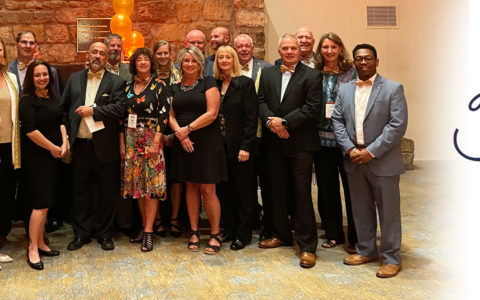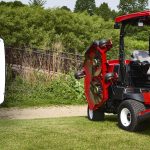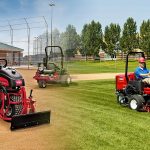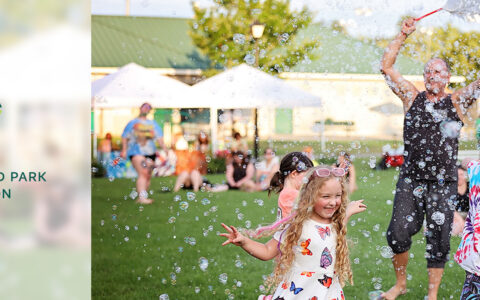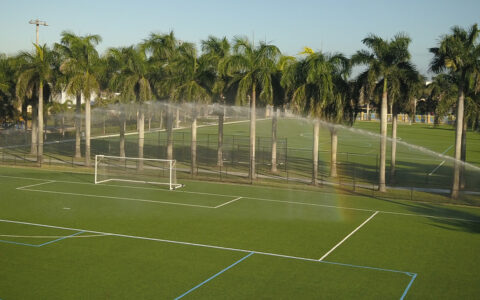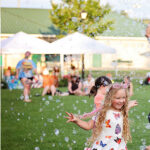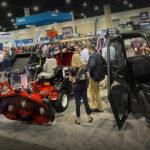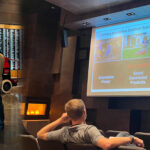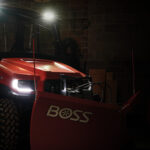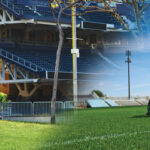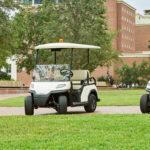It’s easy to forget when we’re watching our favorite teams, but there’s a science to creating those beautiful green grass sports fields — and some of that science is taking place at Iowa State University in Ames, Iowa.
We recently asked professors Adam Thoms, Shui-zhang Fei and Nick Christians from Iowa State’s Department of Horticulture to tell us about some of their current research on athletic fields and more.
Athletic Field Safety and Performance
Staff and students at Iowa State are doing a lot of research on athletic field safety, including the performance of various turfgrasses — from lower-input fields to tall fescue, as well as some newer perennial ryegrass and Kentucky bluegrass blends.
“Athletic field performance and safety are big trends right now, and our goal is to be a leader in that research area,” Thoms explains. The team is testing for surface hardness, how different grasses handle traffic, and how they heal back in after traffic has occurred.
According to Thoms, they use a modified Toro® ProCore® aerator as a traffic simulator, with two passes equal to the wear of one football game. In the spring, the team will start looking at how weeds affect the quality of the playing surface as well.
“We’ve got a very active sports turf group right now,” Thoms adds. “We have a large research area dedicated to sports turf that was just completed last year, and we have great support from the athletic department — that’s been a real strength.”
Each year, the athletic department hires several graduate students for assistantships under the guidance of Tim Van Loo, manager of athletic fields and grounds at Iowa State and president-elect of the Sports Turf Managers Association (STMA). Students work on university athletic fields including Jack Trice Stadium, which is one of only three remaining grass fields in the Big 12 Conference and has been a top-ranked field nationwide.
Field Trials
In addition to the athletic field research, there are a number of other projects continuing late into the fall in Iowa State’s research fields. In fact, at any given time, the turf program has as many as 20 to 25 projects underway.
Current projects include a number of National Turf Evaluation Program (NTEP) trials, including Kentucky bluegrasses, perennial ryegrasses, tall fescues, and creeping bentgrass at both green and fairway heights.
In the home lawn care area, Thoms is looking at a tall fescue that remains greener longer through hot, dry periods in Iowa summers, as well as the proper times to establish new grasses (fall is preferred over spring). He also just put out some new cold-hardy bermudagrass cultivars.
Golf, Amino Acids, Genetics and More
On the golf side, Iowa State is looking at ways to manage thatch on fairways. They’re also looking at the effects of organic management and recycling of aeration cores on putting greens so that superintendents don’t have to buy and apply as much sand.
In other areas, Christians is working with a Ph.D. student who is studying amino acids and their effect on root stimulation and density of creeping bentgrass. And Fei’s research is focused on taking genetics and molecular approaches to study agronomic traits important for cool season turfgrasses.
A key area of Fei’s research is on understanding the mechanism of how cold acclimation and freezing tolerance develops in overwintering grasses. He is also exploring the use of gene editing tools for targeted gene editing in creeping bentgrass.
Future Plans
Looking toward the future, Ben Pease, a new farm manager, will be starting in the spring to oversee operations on the research farm. His addition is part of an overall expansion of the program.
For more information about the horticulture program at Iowa State University, visit www.hort.iastate.edu.





